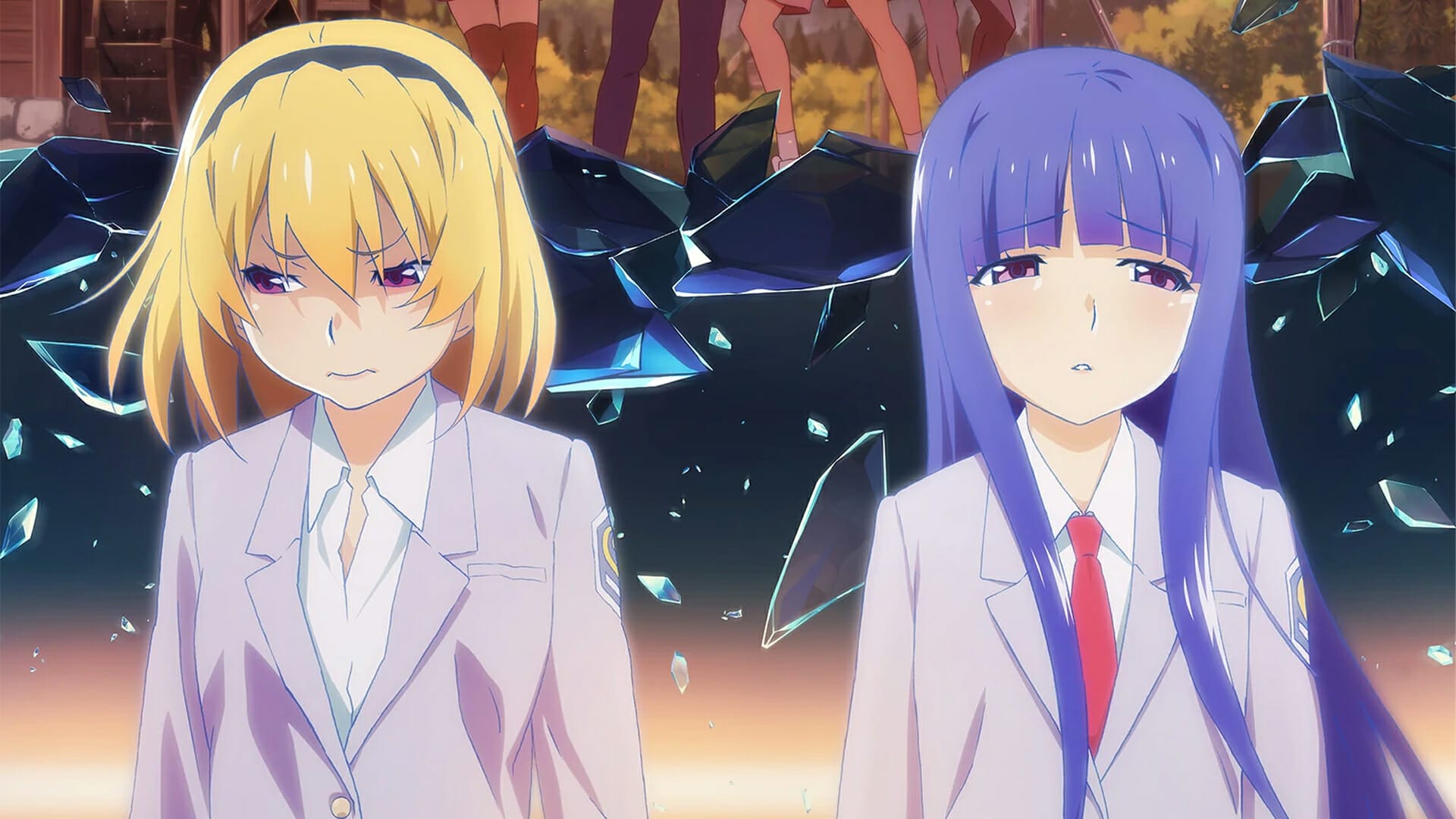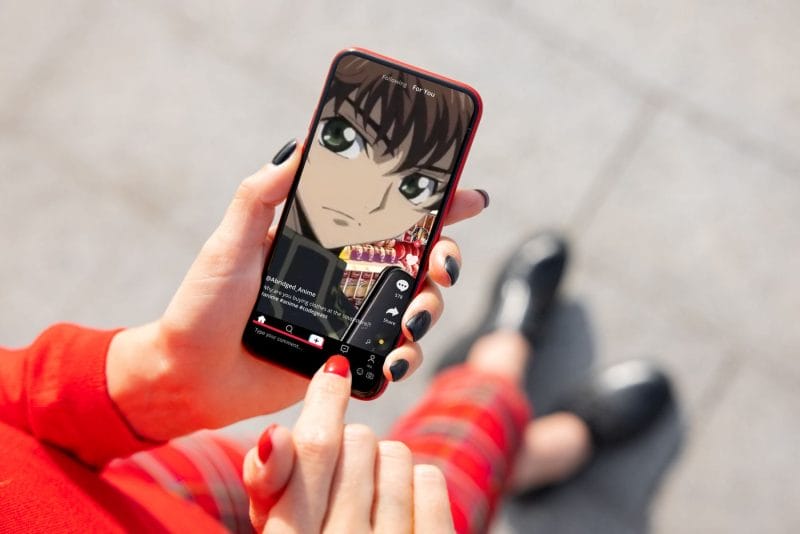After fading from the public consciousness for almost a decade, Higurashi When They Cry returned in 2020 and 2021 with a new anime that’s widely regarded as one of the worst in the entire franchise. Longtime fans are now left wondering whether or not Higurashi’s renewed social relevance was worth it.
Warning: mild spoilers for Higurashi Gou and Sotsu
According to When They Cry creator Ryukishi07, Higurashi fans frequently say that they wish they could wipe the story from their memories just so they could experience it for the first time again. “So for a long time, I’ve thought that if I were ever given the chance to give back to those fans one day, then I would like to grant their wish,” Ryukishi said. “When the opportunity to make an anime came upon me, I thought about taking all the previously established rules of Higurashi and making an entirely different ‘New Higurashi’.”
Those fans had no way of knowing, of course, but when they made that wish, they were making it to a monkey’s paw.
Originally a multi-chapter horror visual novel, Higurashi is probably the most well-known entry in the When They Cry franchise. While its heyday is generally considered to have been in the late 2000s (thanks to its generally-well-liked anime adaptations), it’s since developed a dedicated fanbase that praises it for things like strong character writing, suspenseful narratives, and the astoundingly human way it talks about issues that are rarely focused on in anime; a far cry from its reputation as simply “the source of those gifs of the scary anime girls laughing”.
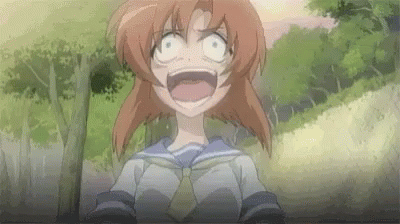
The announcement that the aptly titled Higurashi New, the first new Higurashi anime in almost ten years, would be coming out in 2020, was as out-of-the-blue as an anime announcement could get. Sure, When They Cry had developed a cult following, but as far as the Higurashi anime went, fans widely agreed that Higurashi Kai and Higurashi Rei (which aired in 2007 and 2009 respectively) wrapped the whole thing up well enough (to say nothing of how the last main chapter of its source material, the visual novel, came out in 2006).
Any remaining coins from the collective wallet of Higurashi fans presumably would have fallen loose in the early 2010s, when the Higurashi Kira and Higurashi Kaku OVAs aired. So about a decade later, was New really going to be able to contribute anything worthwhile to the seemingly-complete story of Higurashi?
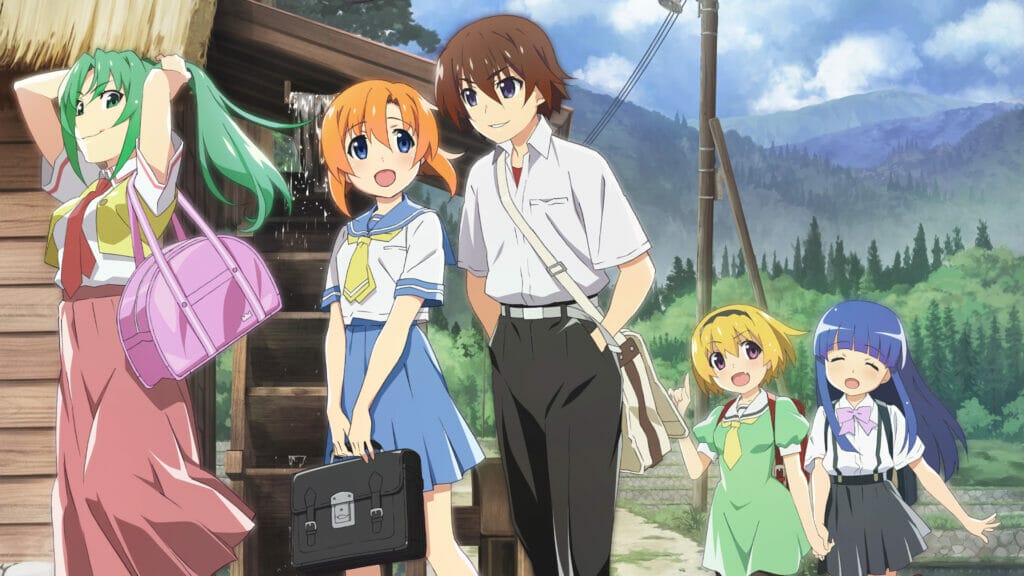
New’s marketing was mostly vague, leading many longtime fans to assume that it must have been a remake (otherwise they’d surely at least tease some new content, right?). As such, its value would focus less on bringing something new to the story of Higurashi, and more on bringing in new fans. Nonetheless, Ryukishi was going to be directly involved, so longtime fans still felt plenty of reasons to be interested as well.
New quickly became one of the more noteworthy anime of 2020—Funimation, for example, was interested enough to pick up New’s license despite having let the license of the 2006 anime expire in 2011 due to poor sales. That the poor sales were likely because Geneon had already given it a full release and dub before Funimation got it, was apparently irrelevant.
The first episode, when it eventually aired, played out more or less like longtime fans anticipated it would, but the second episode was when things took an unexpected turn. Right out the gate, the viewer saw one of the main characters talking to Hanyuu about fragments—a character and concept that didn’t enter the series until Kai. This was, quite clearly, not the direct remake everyone thought it was. A new promo image and name—Higurashi Gou—further indicated as much.
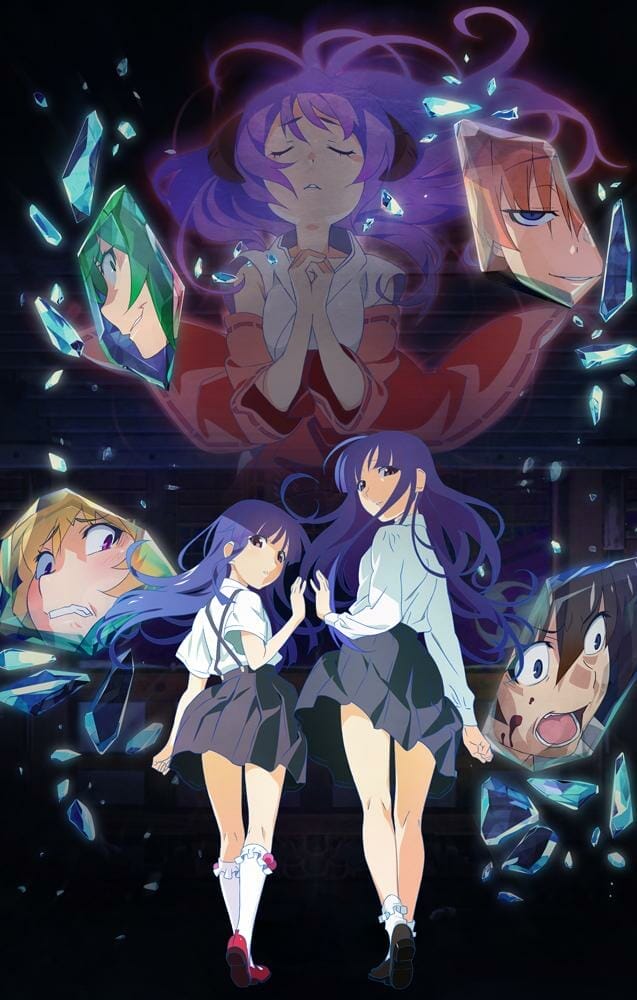
New fans who thought they needed no prerequisite When They Cry knowledge were left confused about what was going on, and returning fans were confused about what Ryukishi’s master plan for this so-called “remake” was—or whether or not it was a remake at all anymore. Either way, “confusing” was probably the most common word used to describe that second episode. And the first seventeen episodes of the series more or less continued on that way: like a reimagining of the 2006 anime but with a few key details changed, and laced with Higurashi spoilers of varying gravity.
But Gou’s contribution (relevance) to the Higurashi story overall, many longtime fans speculated, was never meant to be in those first seventeen episodes. Instead, it was related to the final seven episodes, which (finally) featured an entirely new arc: Satokowashi-hen, or the Village Destroying Chapter. Specifically, the importance wasn’t just in that it shed some light into what happened to two of the central characters—Rika and Satoko—in the aftermath of the main story, but also its somewhat open ending, which heavily alluded to a connection with another popular When They Cry title, Umineko.
There is perhaps no question When They Cry fans are more used to hearing than, “Do I have to read/watch Higurashi to read Umineko?” (or vice-versa). The answer is a resounding “Technically no, but—” In a nutshell, while being familiar with one adds a lot to the experience of the other (in particular, it’s generally recommended that if you are going to go through both, you should read/watch Higurashi first since it was released first), they’re not direct sequels or prequels to each other; they stand alone enough that one is not 100% necessary to understand the other. A more direct link between Higurashi and Umineko, however, could change that.
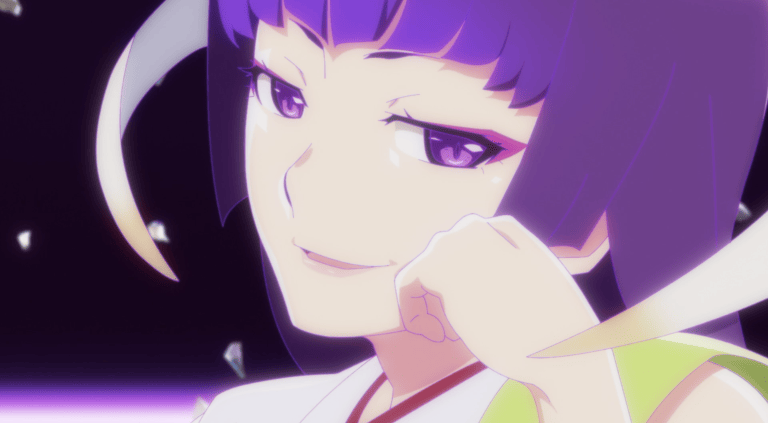
Compounded with some brief Umineko imagery in Gou’s opening, the presence of Eua (a character originally from Umineko who normally uses the name Featherine Augustus Aurora), and the immediate announcement of a second season which would be called Higurashi Sotsu, it was hard for Umineko fans to imagine how this could be building up to anything but a more direct link between Umineko and Higurashi.
There was a very real possibility that Sotsu could not only bring new Higurashi story material, but new Umineko material as well. Years after their main content was officially finished, the two series could be continuing in an explicitly shared universe—a thrilling possibility to any fan, new or old, casual or hardcore.
So did Higurashi Sotsu manage to live up to these expectations? Did it add meaningful new story elements or fresh takes on familiar arcs? Did it serve as a link cementing the shared storyworld between two iconic properties? Did it land with emotional impact and win the hearts of fans new and old?
The short answer is “no.”
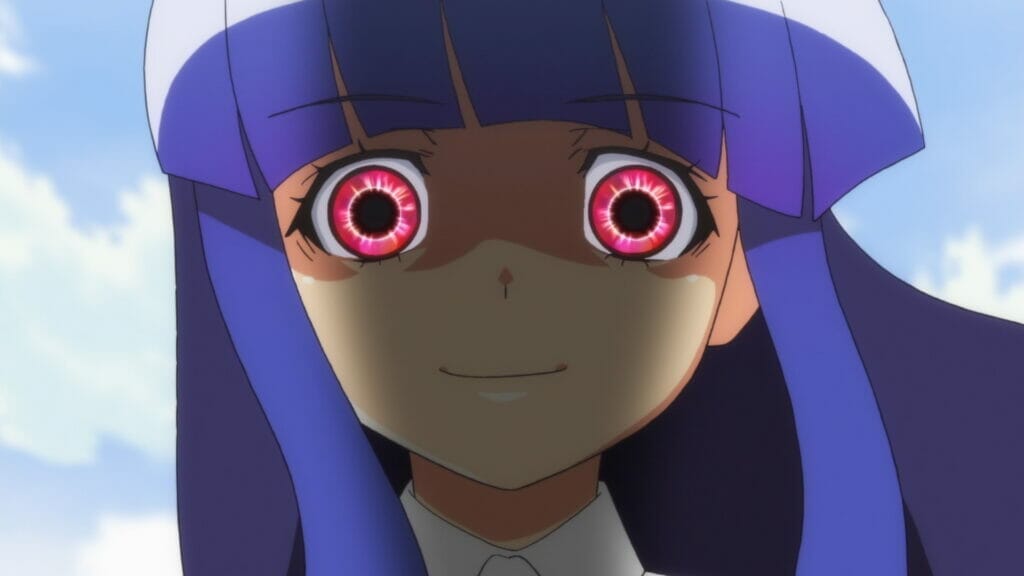
And the long answer is exactly that—long. Sotsu was a fourteen-week, fifteen-episode-long, glorified recap of Gou, which itself already wasn’t far from being a glorified recap of the 2006 Higurashi anime. It was an Endless Eight-esque trudge that tested its viewers’ patience in the name of spoon feeding them half-baked answers to Gou’s mysteries. The only key differences this time around were moments of redemption for hated characters like Satoko’s physically abusive uncle Teppei, and a “Satoko did it” stamp on virtually every major occurrence and plot point whether it made sense or not.
In other words, in the eyes of many of the fans, the few differences Sotsu did have from Gou were, at best, extremely unnecessary. At worst, they ruined not only the story that Gou tried to build the foundation for, but also Satoko’s now thoroughly-assassinated character. Either way, it was a psychic gut punch. All this, and the precious Umineko link that so much of the interest surrounding this series revolved around simply never happened. And so, week after week, disappointment after disappointment, Sotsu seemed to serve only as a way for Higurashi fans to waste twenty minutes each week: Salt in their collective wound.
It wasn’t until the last two episodes that the now-exhausted audience was finally given a substantial amount of new content. Had those last two episodes stuck the landing, then more fans might have felt more willing to offer Sotsu the same forgiveness it was doling out to some of its most hated characters, but instead, it ended with an apathetic, unimpressive “meh.” The underwhelming cherry on top of a repetitive sundae. Its fate as a new punching bag for When They Cry fans was sealed. As though foreseeing how disappointed Umineko fans would especially be, the Higurashi mobile game (Higurashi Mei) soon announced that it would have a story campaign with Umineko that would be written by Ryukishi: a consolation prize.
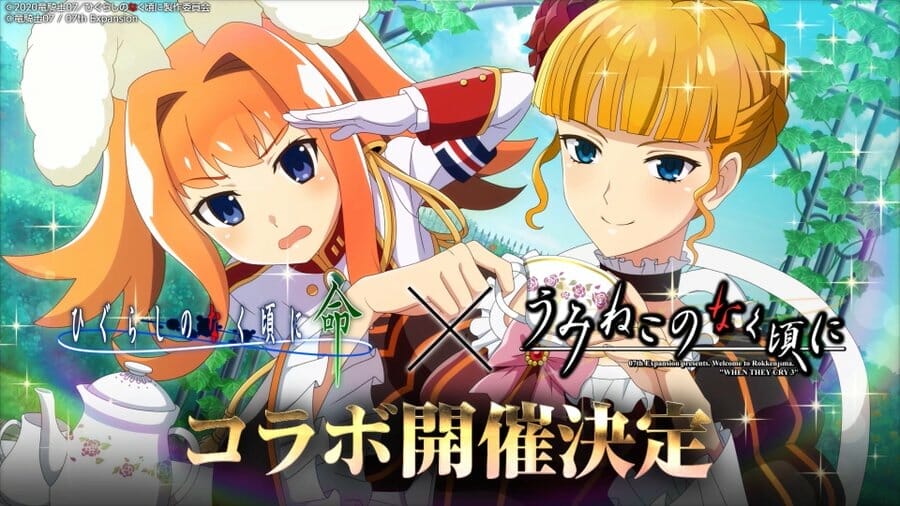
In a year with some of the most explosive, high-profile anime-related disappointments to happen in a long while (Promised Neverland season 2, Wonder Egg Priority’s ending), it says a lot that, at least among those who watched it, Sotsu is still widely regarded as one of—for some, the—biggest anime-related disappointments and/or frustrations of 2021. And in the advent of all this negativity, a big question still seems to linger in discussions about Sotsu: was it worth it? Was Higurashi’s renewed social relevance, new merchandise, and hilarious array of official crossovers worth an expanded canon that, to some, now feels weaker? Was it worth the dubious first impression (not to mention spoilers for earlier material) that Gou/Sotsu left on countless new viewers?
There’s no wrong answer to any of these questions of course, though the point of how it’ll affect new, incoming fans to When They Cry is an interesting one. Considering the aforementioned influx of new When They Cry content—including even more that we know is on the horizon (EX: more Ciconia chapters and hopefully Umineko Gold)—it seems like the creators are anticipating a new, hungry market. Only time will tell whether this new content (or the volume of this new content) will prove too much for potential incoming fans, or if it’s enough to make them curious enough about the source material to, well, read it. In the meantime, disappointed longtime fans are waiting for a reason to feel like Sotsu wasn’t a waste of time to come for us on a white horse.


